

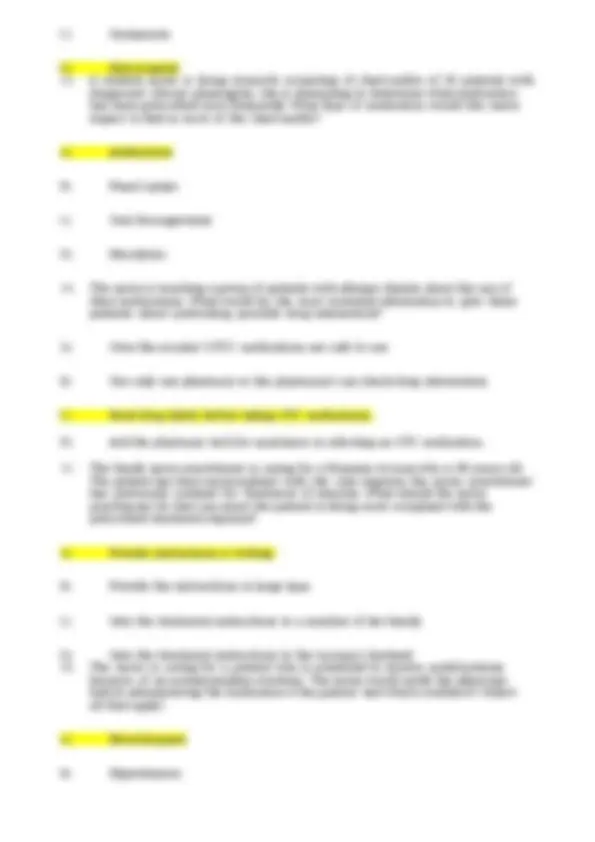
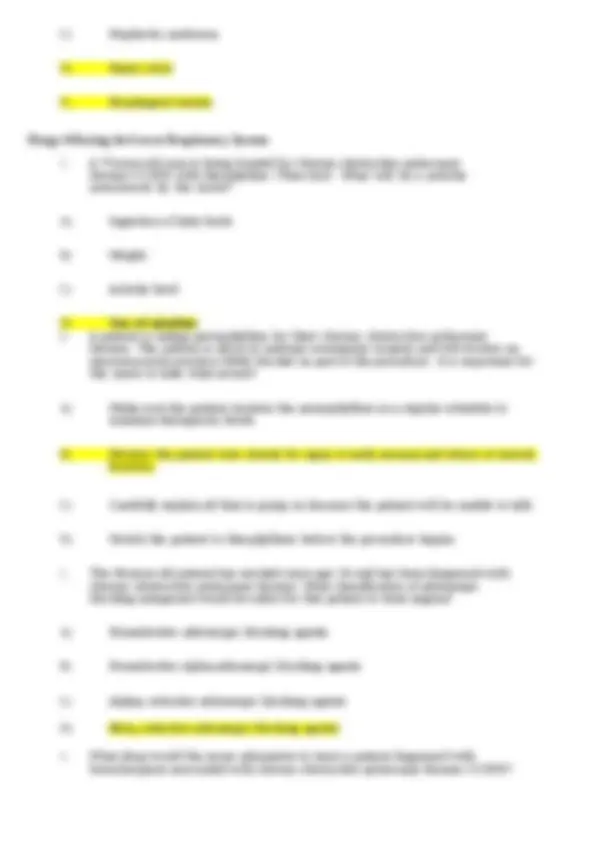
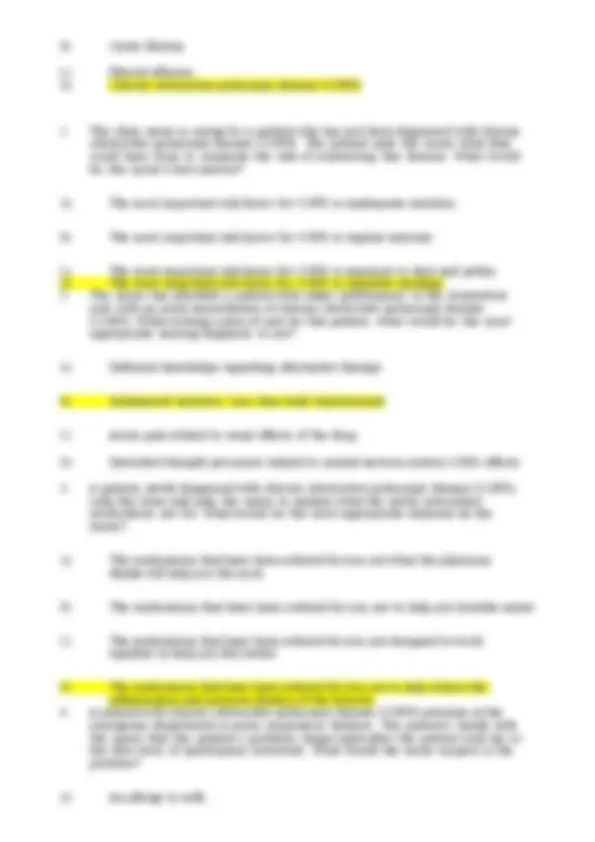
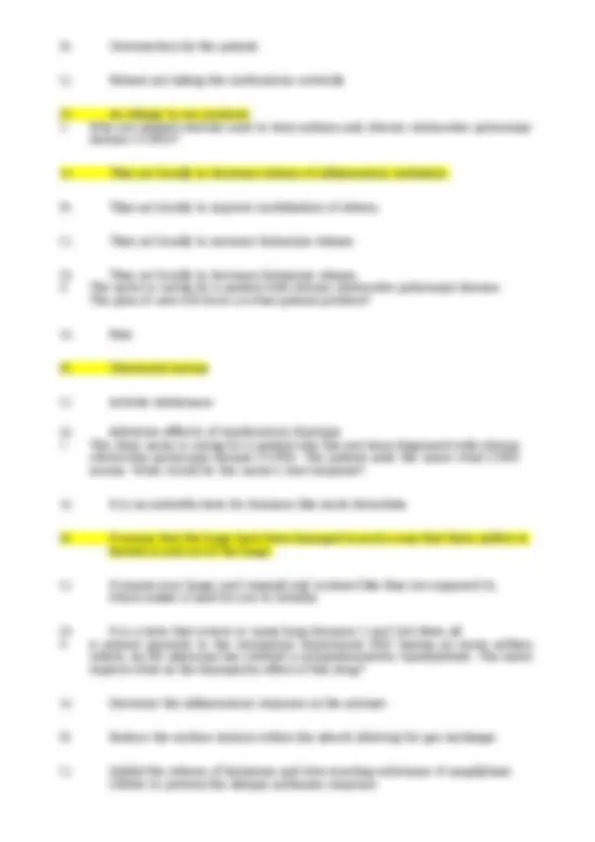
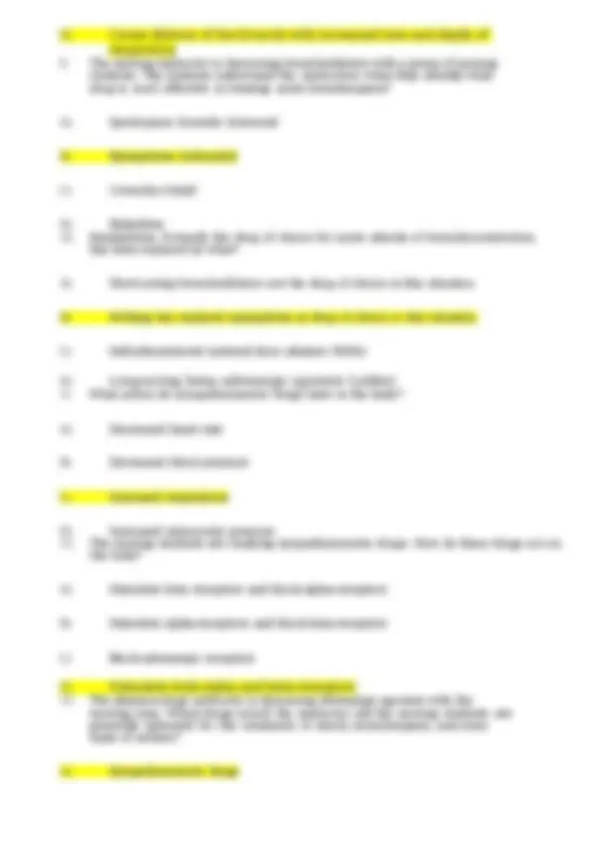


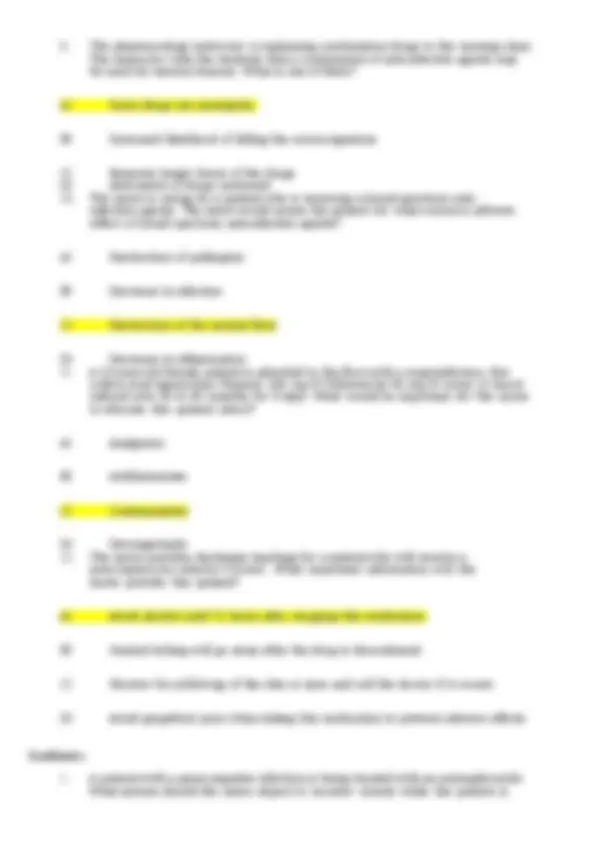
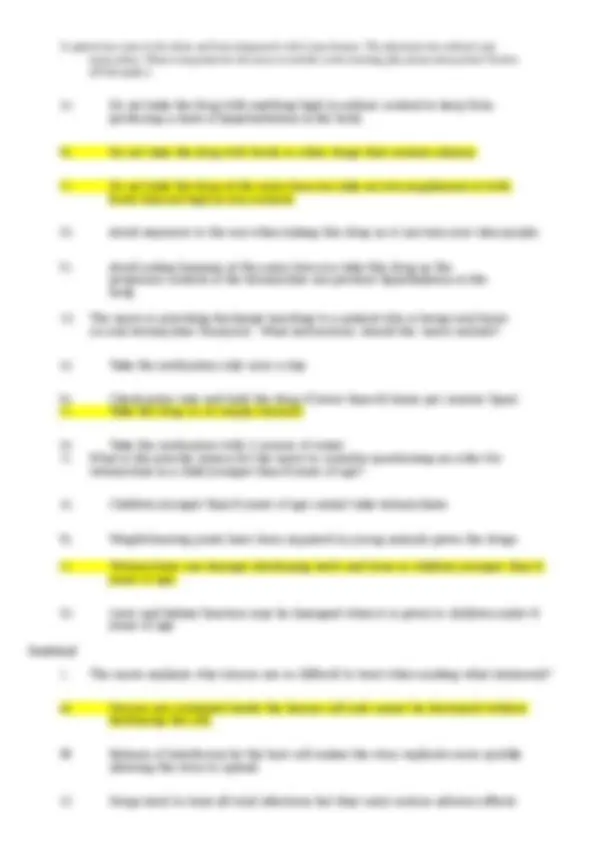
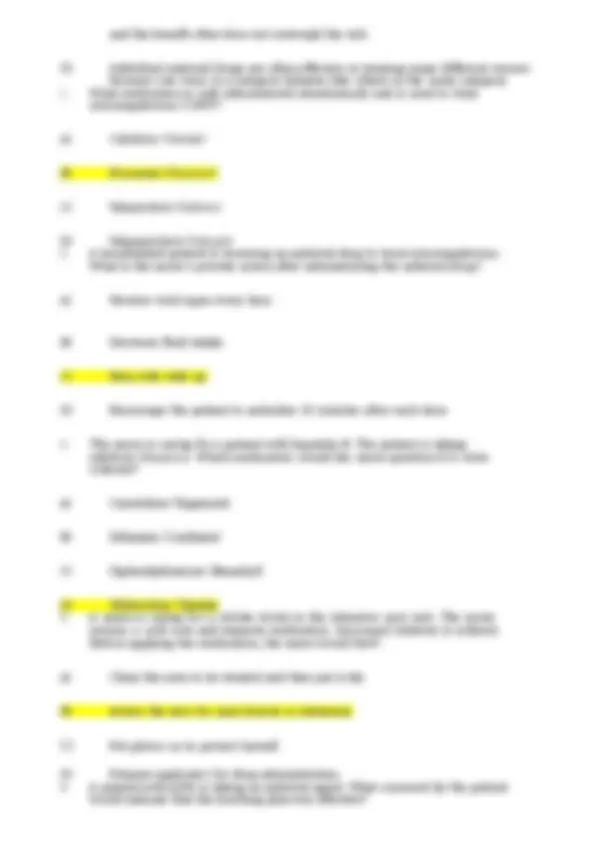
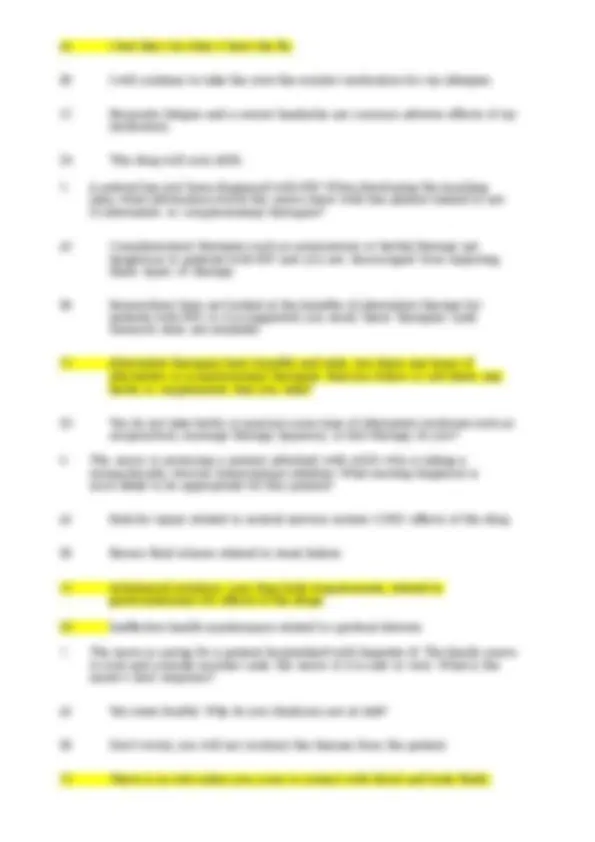
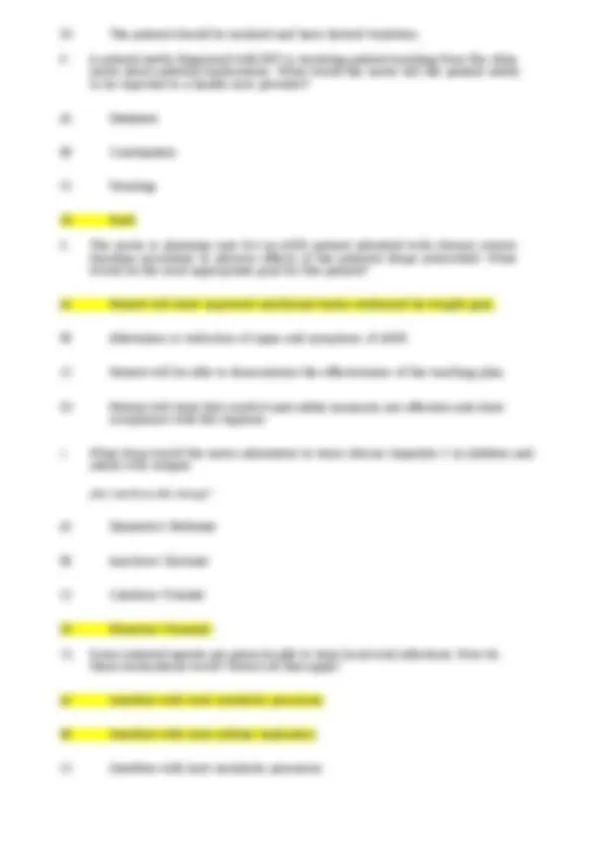
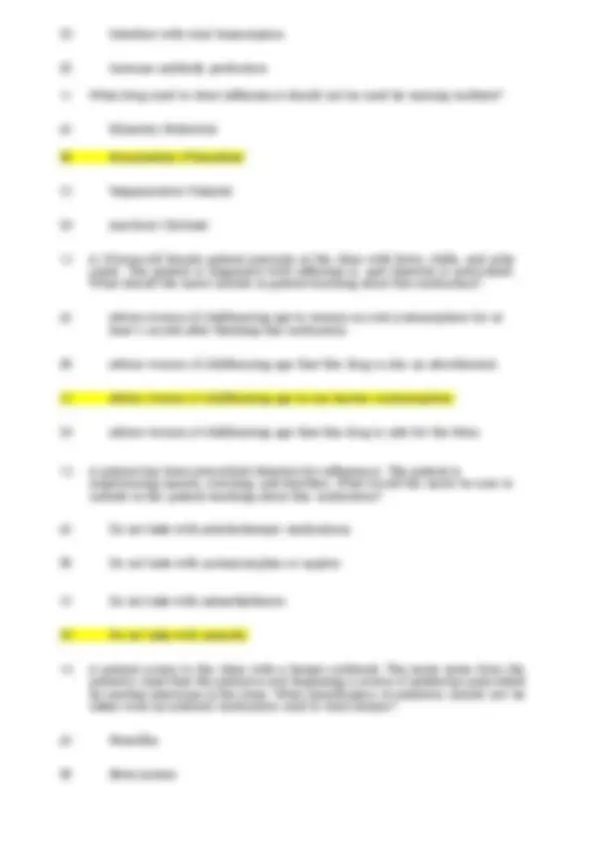
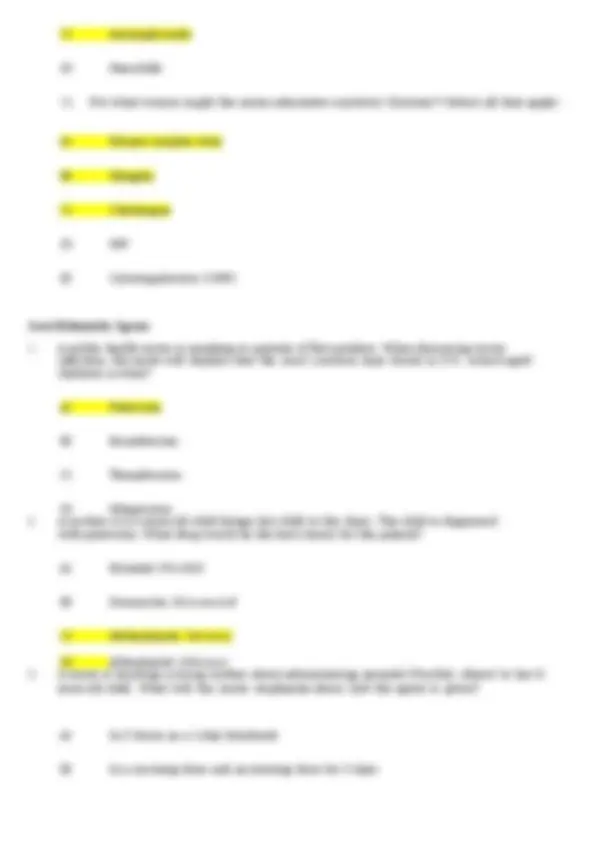
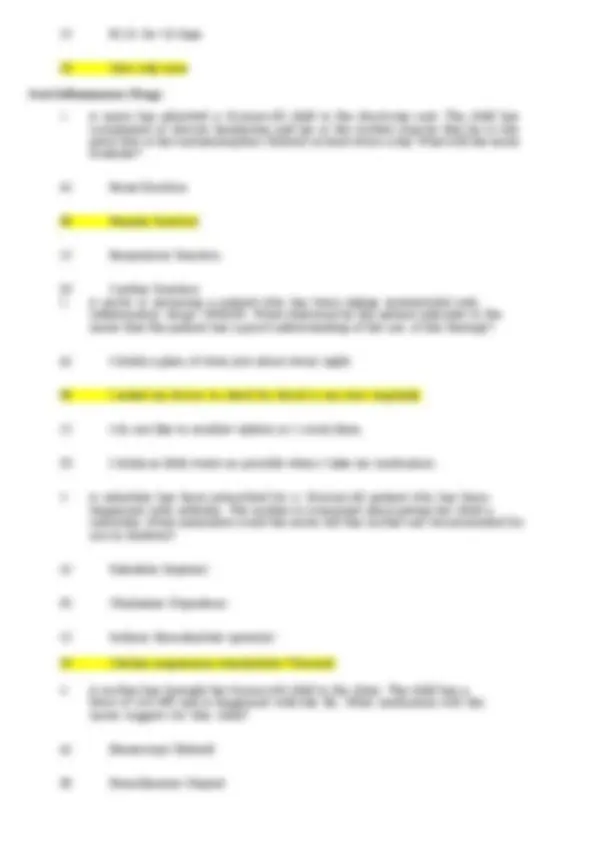
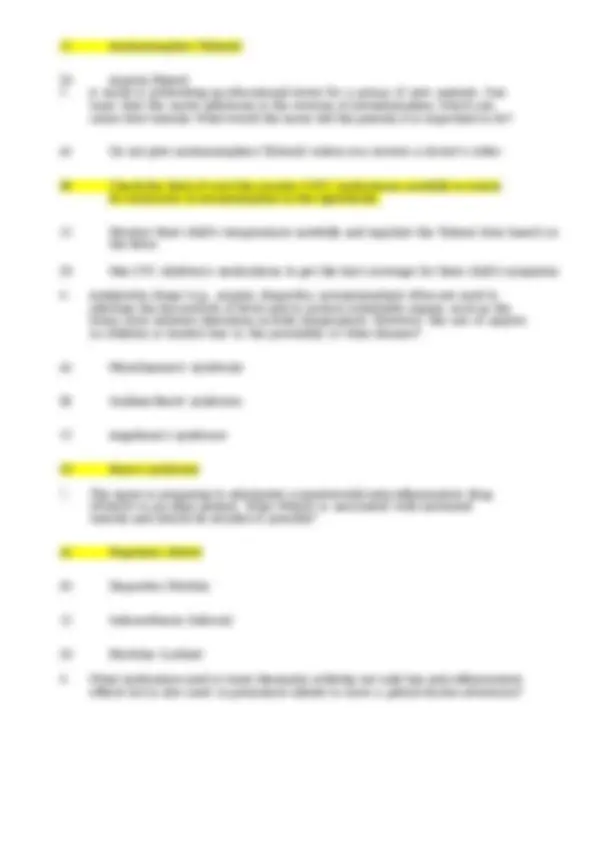
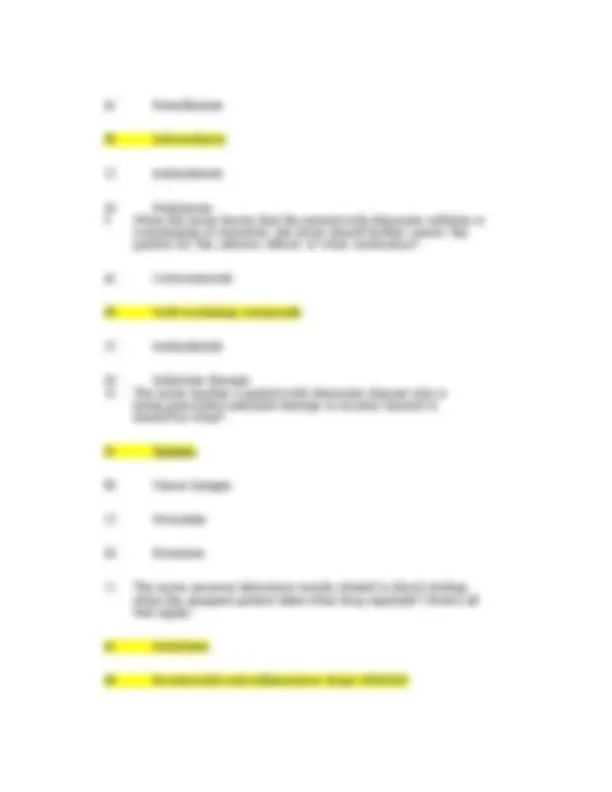




Study with the several resources on Docsity

Earn points by helping other students or get them with a premium plan


Prepare for your exams
Study with the several resources on Docsity

Earn points to download
Earn points by helping other students or get them with a premium plan
Community
Ask the community for help and clear up your study doubts
Discover the best universities in your country according to Docsity users
Free resources
Download our free guides on studying techniques, anxiety management strategies, and thesis advice from Docsity tutors
Drugs Affecting the Upper Respiratory System_ Complete Questions and answers.
Typology: Exams
1 / 28

This page cannot be seen from the preview
Don't miss anything!





















B) This medication may make me anxious and nervous. C) I should call the physician if I develop nausea, diarrhea, or stomach cramps while taking this medication. D) This medication can cause drowsiness, so I will avoid driving or using power equipment while I take it.
C) Gentamicin D) Ketoconazole
C) Nephrotic syndrome D) Peptic ulcer E) Esophageal varices
B) Flavoxate C) Glycopyrrolate D) Ipratropium
B) Cystic fibrosis C) Pleural effusion D) Chronic obstructive pulmonary disease (COPD)
B) Beta-blocking drugs C) Parasympathetic stimulating drugs D) Anticatecholamine drugs
D) It is very important to take the full course of an antibiotic as prescribed and not save remaining drugs for future infections.
course of antibiotic therapy before beginning the procedures and continuing for 5 days after the procedure. What is this is an example of? A) Chemotherapy B) Curative treatment C) Prophylaxis D) Synergism
taking this medication? A) Respiratory system B) Ophthalmic system C) Renal system D) Musculoskeletal system
D) Take antibiotic with food to avoid gastrointestinal (GI) upset. E) Take safety precautions such as changing position slowly.
and the benefit often does not outweigh the risk. D) Individual antiviral drugs are often effective in treating many different viruses because one virus in a category behaves like others in the same category.
D) Prepare applicator for drug administration.
A) I feel like I do when I have the flu. B) I will continue to take the over-the-counter medication for my allergies. C) Excessive fatigue and a severe headache are common adverse effects of my medication. D) This drug will cure AIDS.